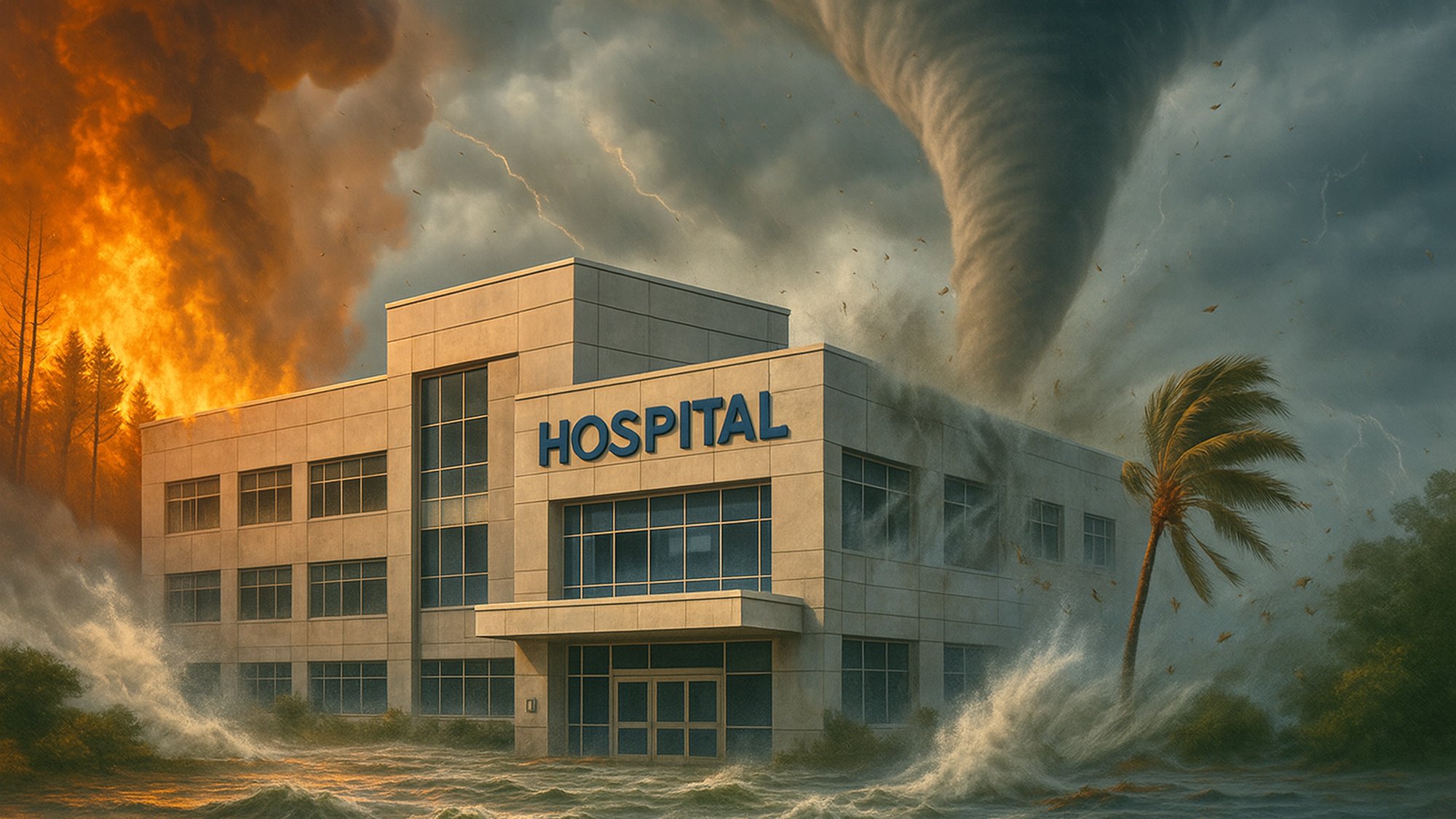
![]()
A New Era of Disruption—Measured in Hours, Not Months
Over the past 18 months, leading organizations have begun integrating live climate, regulatory, and disruption data directly into their clinical and supply chain workflows—allowing teams to triage risk before it turns into care delays.
This shift goes beyond digitization. It’s about protecting trauma care, sustaining dialysis, and preventing surgical cancellations—by acting on the earliest possible signals.
To help your organization take the next step, check out our guide: Climate Change & Supply Chain Risk—What Healthcare Organizations Must Do Now. It outlines a system-wide framework to protect patients and margin in an increasingly volatile world.
What You’ll Discover Inside the Guide
Picture this:
- A wildfire alert from NASA cross-references your supplier database to identify at-risk SKUs and triggers automated substitution workflows.
- A new FDA recall instantly flags affected procedures by CPT code, before the surgical team arrives.
- A NOAA storm forecast drives freight reroutes and facility prep, keeping ICU supply levels safe through the next 72 hours.
This isn’t hypothetical. It’s live in organizations today, and the tools are free or already built into your systems.

Climate Resilience = Patient Care Resilience
A three-day OR shutdown doesn’t just cost $1.2M in lost revenue—it delays diagnoses, interrupts treatment, and increases downstream costs. Resilience isn’t about ESG optics. It’s about clinical readiness and operational continuity.
Note: The following comparison highlights structural incentives, not individual vendors. Evaluation is based on publicly available funding disclosures, rebate structures, and conflict-of-interest policies from platform providers.
| High Stakes for Healthcare Organizations | ||
|
Outcome
|
Vendor-Funded Platforms & Data (Biased) |
Provider-Funded Platforms & Data (Unbiased) |
| Transparency | ❌ Obstructed - Conflicts of interest restrict full visibility | ✅ Complete - Transparency by design, with no external influence or data suppression |
| Alignment | ❌ Misaligned - Prioritizes vendors' financial goals over care delivery | ✅ Aligned - Advanced provider goals, patient outcomes, and public good |
| Decision Quality |
❌ Distorted - Leads teams astray with biased metrics and contract-driven data | ✅ Evidence-Based - Anchors decisions in outcomes, quality, and value |
| Operational Impact |
❌ Damaging - Drives up costs, masks risks, worsens equity and staff burden | ✅ Optimal - Lowers TCO, enhances agility, and improves care and workforce outcomes |
*Evaluation criteria include vendor funding source (e.g., supplier rebates vs. provider contracts), degree of data access control, auditability, and alignment with care delivery.
Our latest guide provides: 🔗
✓ 12-month roadmap to implement real-time climate and recall feeds
✓ Plug-and-play dashboards from vendor-neutral tools
✓ Metrics your board, clinicians, and regulators all care about
✓ Built-in alignment with WHO, FEMA, UCSF, and HHS climate-resilience standards
Why It Matters Now
With global supply disruptions up 38% last year, healthcare organizations that can link hazard signals to procedures will lead the industry in safety, performance, and trust.
Don’t wait for the next crisis to test your system.
We’ve distilled the exact, vendor-neutral playbook top healthcare organizations worldwide are discussing and implementing right now to protect patients, staff, and margin from climate-driven disruptions. Climate Change & Supply Chain Risk—What Healthcare Organizations Must Do Now is the world’s first, fully operational framework aligned with WHO, FEMA, UCSF, and HHS standards—and it’s ready for you to deploy before the next disaster hits.
You don’t need to boil the ocean. You just need to build a system that learns, adapts, and protects care—starting now.
Article Series: "Building Unbreakable Healthcare Supply Chains"
- What is Healthcare Supply Chain Resilience?
- Why Consistent Supply Chain Resilience Assessments Are Vital
- Financial Resilience—Protecting Your Healthcare Organization from Cost Shocks
- Supplier Diversification—Why Relying on One Vendor Isn’t Wise
- Technology & AI—The Future of Resilient Healthcare Supply Chains
- Climate Change & Supply Chain Risk—What Healthcare Organizations Must Do Now
- Staff Training & Culture—The Human Side of Supply Chain Resilience
- The ROI of Resilience—How Prepared Healthcare Organizations Save Millions
Request a Complimentary Supply Chain Resilience Assessment
For a limited time, BlueBin offers a complimentary supply chain resilience assessment for healthcare organizations, including acute and non-acute facilities, to evaluate their resilience framework against industry-leading practices.
Resilience isn’t about reacting. It’s about remembering in advance—and preparing so your patients don’t have to pay the price for systems that didn’t.


